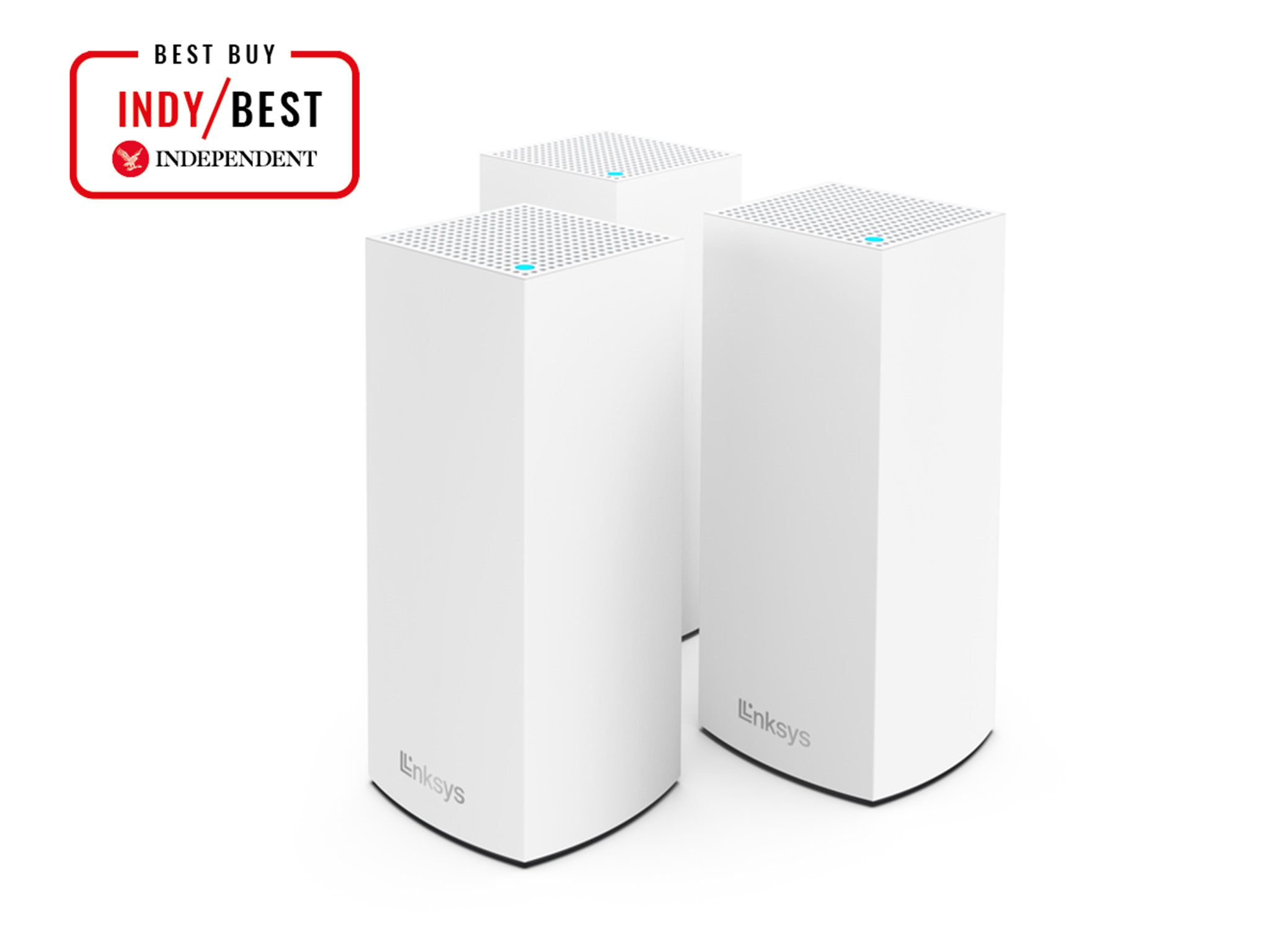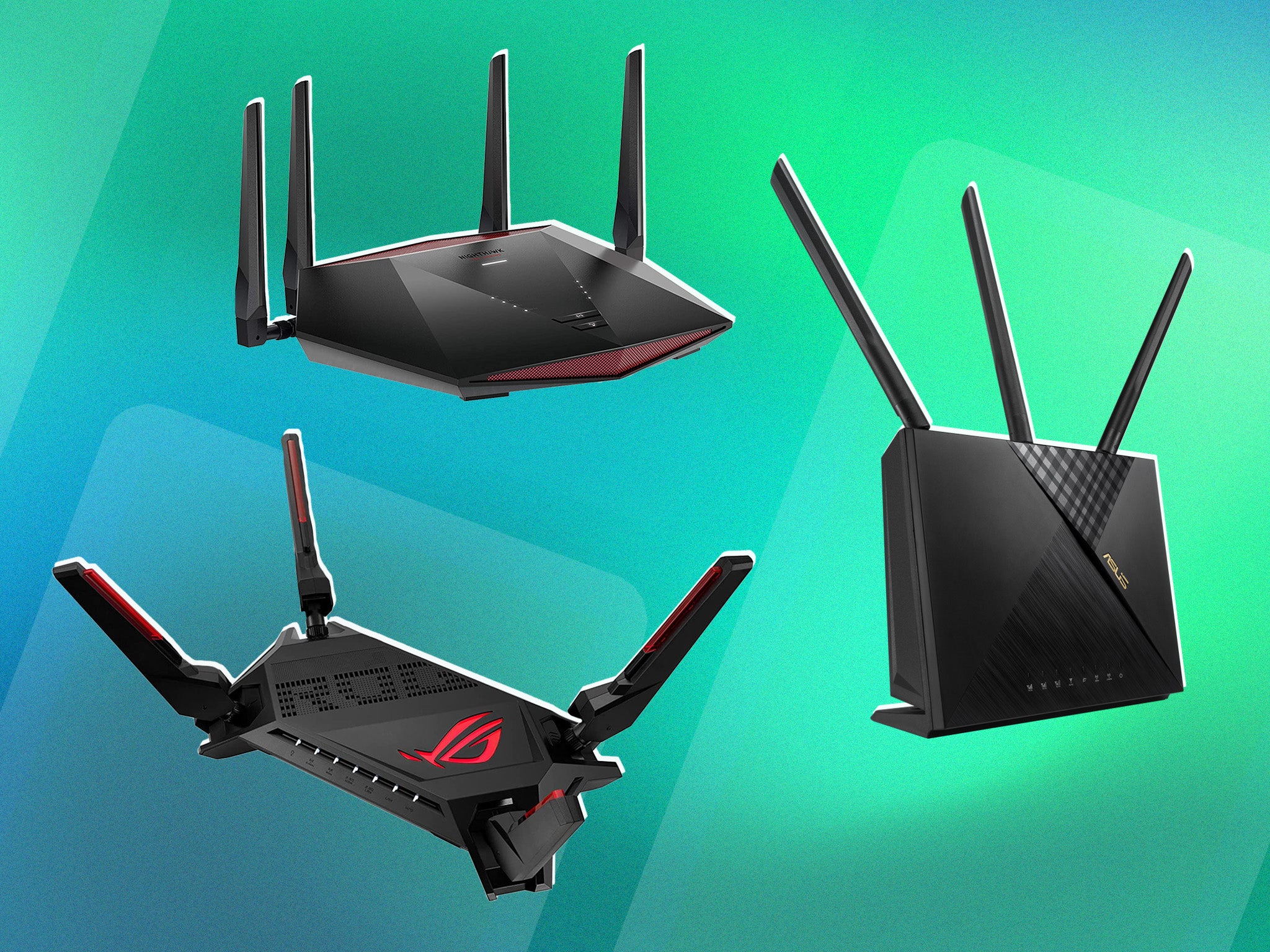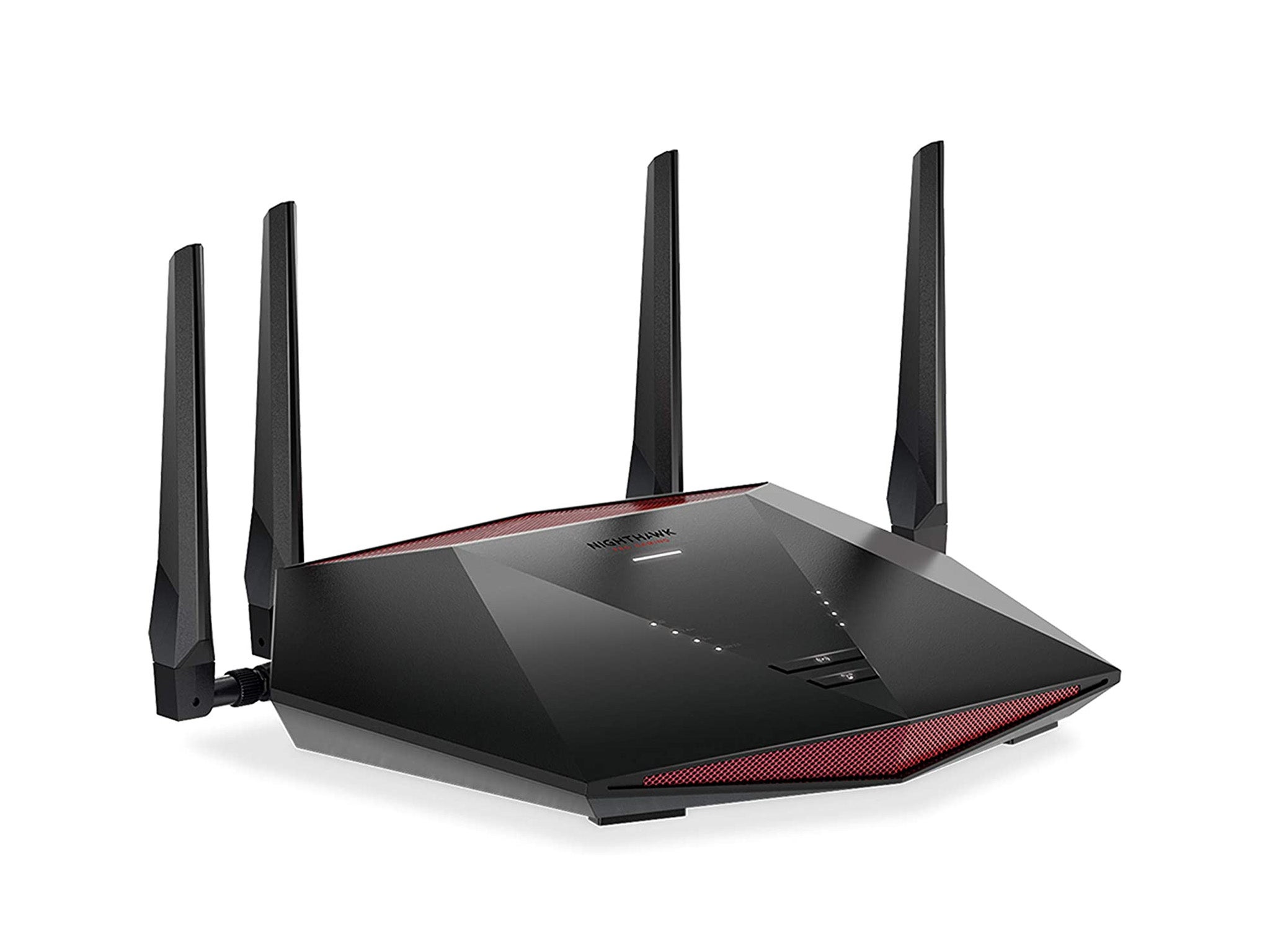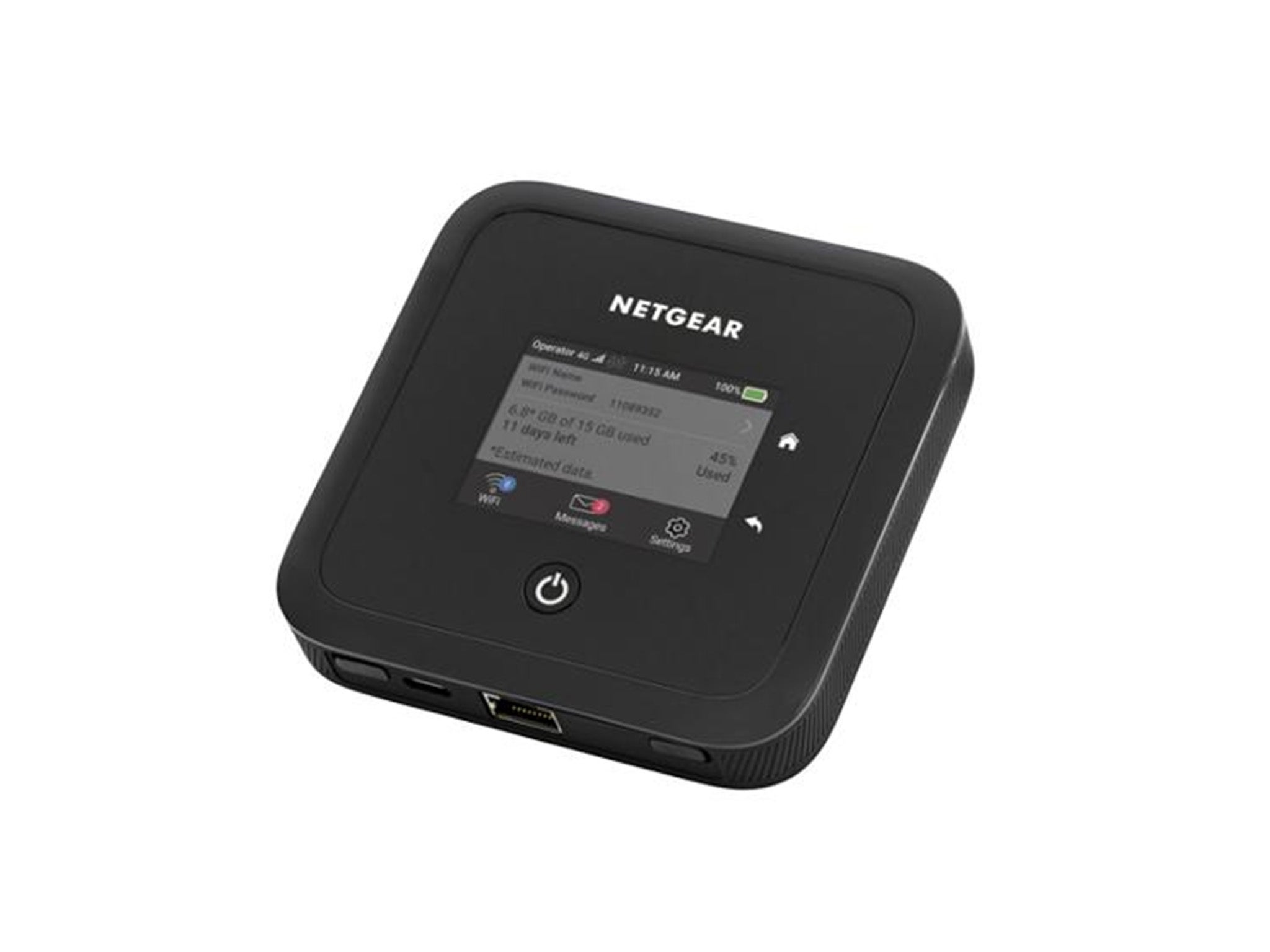
The Independent's journalism is supported by our readers. When you purchase through links on our site, we may earn commission. Why trust us?
6 best wifi routers for a blisteringly-fast connection throughout your home
Infuriated by endless loading times? Switch to these speedy routers for gaming and more

The raw, piercing fury that descends when your wifi decides it can’t be bothered anymore never gets easier to bear. Since the world went WFH, it’s become even more important to stay online, and even more annoying when we’re not.
Switching up your wifi router can be a way of making sure that you’re not cursing the internet gods with any regularity. That box you got when you joined your network provider might be okay, but a more specialised router is likely to have new tech inside which helps make sure you’re getting the best connection speed possible. The latest wireless standards, for instance, offer ever more bandwidth compared to earlier generations.
You want reliability, and you want a guarantee of fast download speeds, and you want a range of signal which covers your whole living space, or at least the option to add boosters to make sure you’re never out of range. It’s also important to know what kind of security features your wifi router set-up can offer you against hacking and criminal attacks.
One term you might not have seen before is Quality of Service (QoS) customisation. Essentially, wifi routers with QoS services can give you the option to prioritise certain devices, whether it’s your gaming rig or the work laptop you need a decent Zoom connection on. More and more routers have more expansive and fine-tunable QoS settings, and if you’ve the time for it, it’s a potentially very powerful tool.
How we tested
Over two weeks, we worked our way through each of the products below giving each a six-hour session. To simulate the kinds of loads which might be placed on them in a busy household, we ran as many internet-connected devices at the same time as we could and checked how well download speeds stood up to the pressure.
The kinds of download speeds you can expect vary pretty wildly across the country too. They tend toward the quicker in the part of the country where we tested, north London – one government report in 2020 suggested average speeds in cities were up to 30mb a second faster than rural areas – which is worth taking into account.
Range is slightly tricky to test against claims as routers tend to avoid giving maximum coverage, but we tested how practical they were by putting the routers at the very extremes of our flat and using devices as far away as possible to mimic different users in different parts of a house. That did include sitting in the stairwell of the building trying to download an episode of The Repair Shop.
The best wifi routers for 2023 are:
- Best overall – Linksys atlas pro 6: £99,99, Argos.co.uk
- Best for gamers – Netgear nighthawk XR1000: £829.99, Netgear.com
- Best for businesses – ASUS 300M LTE advanced 4G-AX56: £167.99, Amazon.co.uk
- Best voice assistant intergration – Google nest: £58.95, Amazon.co.uk
Linksys atlas pro 6

- Best: Overall
- Dimensions: 18.5cm x 8.6cm x 8.6cm
- Speed: Up to 5400 Mbps
- Security : WPA3/WPA2, SPI firewall
Buy more than one and you’ve got a mesh system going, but even on its own the atlas pro 6 is a sturdy option. It has two bands, to split your demands and keep everything moving at a decent pace. You can have up to 30 devices running at once on the atlas pro 6, and the strength of its signal and the speed of access it gives is genuinely impressive even in the slower parts of our flat.
Don’t expect a lot of under the bonnet tinkering options from the app, which is a little simplistic – though parental controls, advanced security controls and device prioritisation are all available – but for a good all-rounder with the capacity to keep a busy household online there aren’t many better options.
Netgear nighthawk XR1000

- Best: For gamers
- Dimensions: 29.5cm x 20cm x 6.4cm
- Speed: Up to 5.4Gbps across both bands
- Security: WPA2/WPA3; Netgear Armour optional
A specialist router to make sure you never end up lagging behind your competitors is a bit of an outlay, but there’s no price you can put on the ability to muller seven-year-olds on FIFA in peace. Netgear’s nighthawk XR1000 is wifi 6 enabled and comes with a gigabit ethernet port and four regular ethernet ports to smooth connection for your console or PC.
Using the Nighthawk app you can quickly and easily find the fastest servers for your game globally, as well as manually allocating more bandwidth to the functions you’re using. Like we say, it is pricey, and Netgear’s armour security system is an extra £84.99 a year on top of the money you pay for the hardware itself. On the other hand, it looks like it could fly out of the Death Star, which is nice.
Netgear nighthawk M5

- Best: Mobile router
- Dimensions : 10.5cm x 10.5cm x 2.15cm
- Speed: Up to 20 Mb/s (4G); up to 100 mb/s (5G)
- Security: VPN support, password protection
If you happen to be out in the sticks where internet speeds still aren’t what they might be, an extra emergency booster like the M5 may be the answer. It promises – and delivers – 5G connection wherever you are, with a battery life which should be good for a day out doing what you’re doing even with multiple devices connected.
It’s really simple to set up and use, especially with its touchscreen interface, and the ability to use it as a backup for your usual router is squirrelled away in the settings too. When your wifi is working, the M5 uses that; when it isn’t, the M5 steps in to cover the gap.
There are a couple of things to bear in mind, though. Firstly, as you’ll see, it’s nosebleed-inducingly expensive. Secondly, the expense doesn’t end there, as you need a SIM card to run it off. However, the 13-hour battery life should be enough for most users.
ASUS ROG rapture GT-AX6000

- Best: For high use households
- Dimensions : 32.8cm x 32.8cm x 17.9cm
- Speed: Up to 6000 Mbps across both bands
- Security: AiProtection
That “ROG” stands for “Republic of Gamers” – that’s ASUS’s line of gaming tech – and this is a heavy-duty gaming optimised router with high-speed ports and a quad-core processor to help you get the jump on your adversaries.
One of the LAN ports on the back can be designated as your priority gaming port, meaning it automatically gets given more bandwidth space when it’s competing with any other device on your network and ensuring your gaming connection doesn’t slow down. On the app, there’s the mobile game mode option to open up more bandwidth and drive down latency while you game on your phone or other mobile device.
ASUS RangeBoost plus gives extra coverage and parental controls and anti-malware software is included for free too, though given the outlay here you’d be narked if it wasn’t. There’s no maximum range listed, but the rangeboost plus feature promises to boost coverage by 38 per cent compared to ASUS’ models without it – it delivered good coverage across the flat in our test.
ASUS 300M LTE advanced 4G-AX56

- Best: For businesses
- Dimensions : 33.9cm x 11.6cm x 23.3cm
- Speed: Up to 1800 Mbps across both bands
- Security: AiProtection
Despite the spiky-looking design, there’s nothing unwelcoming about the user experience here. It’s dead easy to work with, both straight out of the box and via a raft of easy to follow YouTube tutorials on ASUS’s channel. Most handily of all there’s a straightforward portal to set up visitors to log on simply and quickly, and that nudges it ahead of the competition as a choice for small business owners who want to make their cafe, their waiting room or their bar a better connected place to be. Speeds are reliably fast, and it’s wifi 6 enabled too, meaning you’ll be ready for the next generation of superfast speeds when they roll out across the country. And again, AiProtection is included as standard.
Google nest

- Best: Voice assistant integration
- Dimensions: 90.4cm x 11cm x 11cm
- Speed: Up to 1200 Mbps over both bands
- Security: WPA3
For ages, if you wanted wifi and a voice-activated assistant, you needed two separate devices. The nest, which launched in 2019, brought the two together. It’s a wifi router with a very decent range, and it’s also a smart speaker with built-in Google Assistant. Speed is less important here than security, as family-focused features like the parental lock.
If you like getting under the hood of your wifi and tweaking away, this probably isn’t one for you, but the Google Home app makes actually using the wifi and keeping an eye on what speeds you’re getting – as well as controlling all the bits of your Google-connected smart home – really simple. Plus, the newer nest wifi pro, which launched at the end of October, is a mesh system meaning you can you can add new nest devices to extend the range throughout your home.
Wifi routers FAQs
How do WiFi routers work?
Your router plugs directly into the modem which actually connects your place to the internet. The ethernet cable goes into your wall at one end and the router at the other, and the router becomes a beacon of radio signals which WiFi enabled devices use to connect to the internet.
It does that by taking data packets from the modem which connects your home to the internet, and broadcasting and receiving them wirelessly. Your modem connects you to the rest of the world, but the router connects your devices to the modem and to each other too.
How to boost your wifi signal
You may want to check the internet first (rather than blaming the connection) by connecting your laptop, computer or other device directly into the router using an Ethernet cable. Where you place your router in your home can also make a big difference – essentially, the closer it is and the less obstruction between you and the router, the better.
When it comes to extending the range of your wireless connection, Wi-Fi boosters and extenders are the way to go, by taking the signal from your router and sending it out to the furthest reaches of your living space. You’ll find all the best Wi-Fi boosters and extenders in our roundup.
What’s the difference between WiFi routers and mesh routers?
A mesh router system is quite similar to using a “repeater” to maintain the strength of your WiFi in every area of your home, making sure there are fewer dead spots by placing “repeater” units to expand the covered area. You set up mesh routers and their nodes in the same way, but mesh routers can cover a huge amount of square footage. Here, though, we’re going to be focusing on WiFi routers instead. You can find out more about these in our roundup of the best.
The verdict: Wifi routers
Weighing things up, the key decisions you’ll make are between on one hand the level of flexibility and customisation you’re likely to need with the devices you have along with the load you’ll be placing on your router, and how much you’re realistically willing to spend – as well as the amount of time you’re likely to want to spend tweaking things.
Linksys atlas pro 6 is our best buy as it’s a good all-rounder at a good price point, and the strength of its signal and the speed of access is genuinely impressive.
If you’re spread over several floors of a house however, then ensuring that you choose a router which can be easily converted into a mesh system of multiple routers is sensible. Google’s nest wifi is as straightforward an introduction to that world as you’re likely to get, and there’s the added bonus of its cute, unobtrusive design.
Find the best broadband deals with Independent Advisor
Looking for a new laptop for your new whizzy wifi connection? Read our round-up of the best lightweight laptops for work and play on-the-go



